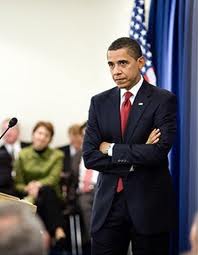Actions Speak Louder Than Words: Body Language in MUN- Part 2, Arms and Legs
Most of our communication is non-verbal, and in a forum like Model United Nations, communication is by far the most important skill for delegates. In part 1 of this series we discussed hands, but the other most obvious and important things to think about when speaking or trying to evaluate your effect on o
thers are the arms and legs. For the sake of simplicity we’re going to talk about two main formations for your arms and legs, and how you can use them to project the best image possible in committee.
Crossed arms and legs
One of the most common and most comfortable ways to hold your arms and legs while sitting or standing may be to cross them, but often it is best to avoid this. By crossing your arms or legs, you may be indicating to those watching you that you are feeling defensive, annoyed, disinterested, or just bored. At the same time, it is important to watch your audience to see how they are reacting to your speech or conversation. If your audience all has their arms crossed, or if somebody crosses their legs right after you make a proposal to them, you may need to change your strategy for communicating your points to them. Audience members with their arms crossed on average retain up to 35% less information from the speaker than those with their arms by their sides, so it’s in your best interest to be sure that their arms aren’t crossed in front of them. Note: a woman crossing her legs above the knees, or a man with his legs crossed so that one ankle is on their knee does not come off nearly as defensive, and can project some confidence, but make sure to not cross your legs at the ankles.

President Kirchner looks fine with her legs crossed above the knees, but Former President Chavez looks overconfident
We cross our arms and legs when we feel defensive or disinterested because subconsciously, we feel the need to physically place something between ourselves and everybody else. This is also why some speakers are much more comfortable speaking from behind a podium. You may feel more comfortable speaking if you’re holding your speech in front of you, which is fine, just be sure that you don’t carry up a flimsy sheet of paper. Set your speech on a binder or in a stack of papers if you need to hold it, that way if you’re nervous your audience won’t see a sheet of paper shaking in your hands!
Hands on Hips, Legs Spread
While crossing ones arms or legs can project defensive feelings, putting your hands on your hips or spreading your legs while seated does the opposite. To oversimplify, instead of putting your arms and legs in front of you to defend yourself, you’re opening yourself up and saying, essentially “Come at me bro”. Subconsciously, we associate physical size with power, so by spreading yourself out either by spreading your legs or putting your hands on your hips and fanning out your arms, viewers may feel that you are confident, engaged, or even aggressive.
Once again, this may just be a comfortable position for you, but its best to be careful using it. Try to keep your hands in front of you or at your side rather than at your hips, and if standing try to keep your legs at shoulder width. When sitting, spreading your legs too much could come across as overly-confident and anger the person you’re working with, which you obviously want to avoid. The worst manifestation of these confident postures is when somebody is sitting down and puts their hands on the back of their head, with their arms spread out by the side- this won’t only project overconfidence, but also superiority, so avoid this at all costs.
Use these tips to your advantage- make sure your message is as clear as possible when speaking, supplementing your words with your movements. Then, watch other speakers and your audience to see how they may feel about ideas, so that you can get the upper hand on other delegates in figuring out how to negotiate and seeing which proposals are popular.
*Much of my experience with Body Language (and most of the statistics included in this article) came from initially reading “The Definitive Book of Body Language”, by Allan and Barbara Pease. I highly recommend this book to anybody wanting to look deeper into the study of body language*



